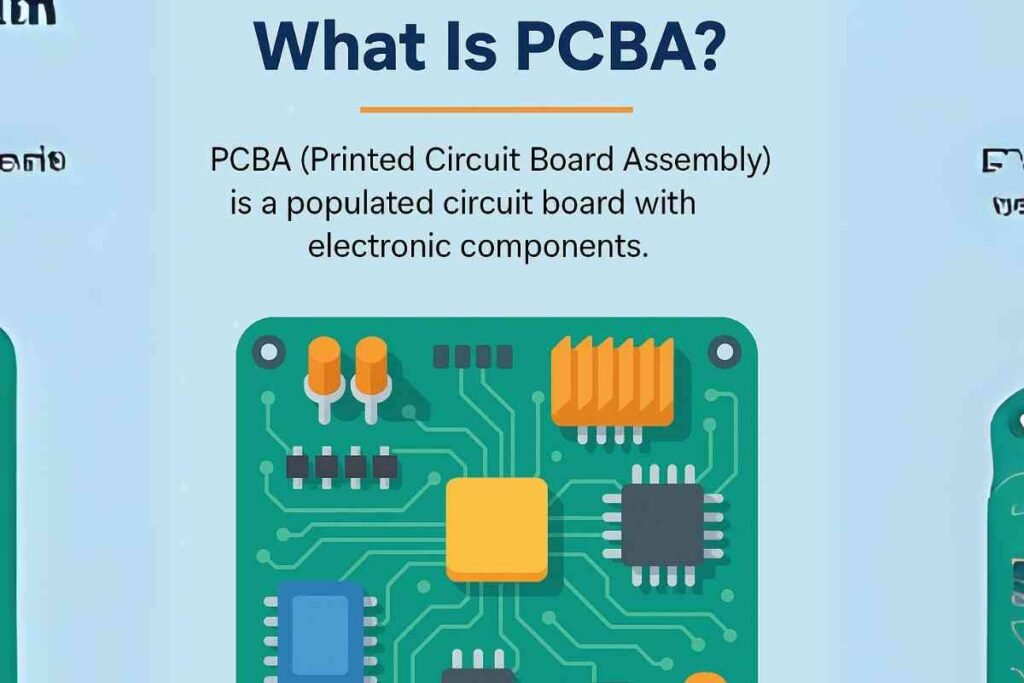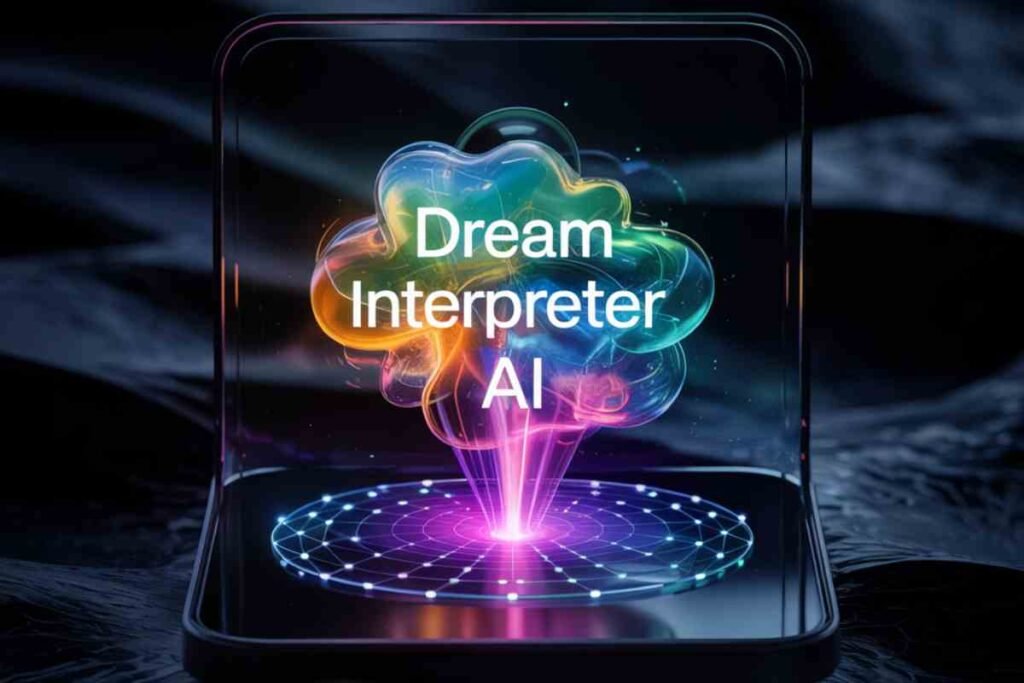In 2025, PCBA remains a vital element in powering smart technologies across industries. From enabling IoT devices to supporting advanced computing systems, Printed Circuit Board Assembly plays a foundational role.
As electronics evolve, understanding Printed Circuit Board Assembly, along with related technologies like FPGA and CPLD, becomes essential.
What Is PCBA?

PCBA stands for Printed Circuit Board Assembly. It refers to the complete assembly process where electronic components are soldered onto a printed circuit board , transforming it into a functional electronic module.
The Printed Circuit Board Assembly process includes:
- Solder paste printing
- Component placement (SMT and/or THT)
- Reflow or wave soldering
- Inspection and testing
Printed Circuit Board Assembly is the foundation of modern electronics, enabling the integration of complex circuits into compact, efficient boards used in everything from smartphones and IoT devices to industrial controllers and automotive systems.
Introduction to FPGA and CPLD
Both FPGA (Field Programmable Gate Array) and CPLD (Complex Programmable Logic Device) are types of programmable logic devices (PLDs). These are integrated circuits designed to be configured by the user after manufacturing, enabling custom digital logic designs.
Although they serve similar purposes, they differ significantly in architecture, complexity, and application.
- FPGA (Field Programmable Gate Array) and CPLD (Complex Programmable Logic Device) are types of Programmable Logic Devices (PLDs).
- PLDs are integrated circuits that can be programmed by the user after manufacturing.
- They allow for the implementation of custom digital logic designs, making them flexible tools in digital electronics.
Key Differences Between FPGA and CPLD
点击图片可查看完整电子表格
In essence, FPGAs are more flexible and powerful, making them ideal for complex and computationally intensive applications. CPLDs, on the other hand, are better suited for simpler, low-power designs that require fast startup.
Key Characteristics of FPGAs
- Highly flexible and reconfigurable, ideal for evolving or complex digital systems.
- Capable of handling computationally intensive tasks such as image processing, machine learning, and high-speed data operations.
- Suitable for applications requiring parallel processing and real-time performance.
When to Choose CPLDs
- Best for simpler logic functions and control-oriented applications.
- Offers low power consumption and fast startup times, making them great for embedded or portable devices.
- Ideal for predictable timing and cost-sensitive designs.
Applications of PCBA in Modern Tech Solutions
Explore how Printed Circuit Board Assembly empowers diverse industries through precision assembly and adaptability.
Consumer Electronics
- Enables compact designs in smartphones, tablets, and wearables
- Supports high-speed data transmission for enhanced performance
- Powers smart features with multi-layer board integration
Industrial Automation
- Facilitates robust control systems in manufacturing equipment
- Withstands harsh environments with high-reliability soldering
- Integrates sensors and PLCs for seamless process automation
Medical Devices
- Ensures compliance with stringent safety and quality standards
- Delivers precision in diagnostic tools and monitoring devices
- Supports miniaturization for portable health equipment
How PCBA Brings FPGA and CPLD to Life

Both FPGA and CPLD chips are integrated into electronic systems through Printed Circuit Board Assembly.
A high-quality assembly process ensures reliable signal transmission, accurate placement, and strong solder joints, which are critical for programmable logic devices to perform at their best.
At PCBasic, we specialize in assembling complex boards that include FPGAs, CPLDs, and other advanced components with precision and care.
Role of PCBA in FPGA and CPLD Integration
- PCBA (Printed Circuit Board Assembly) is the process of assembling electronic components onto a PCB.
- It ensures accurate placement, strong solder joints, and reliable signal transmission for optimal device performance.
- Proper PCBA is essential for unlocking the full functionality of FPGAs and CPLDs in real-world applications.
PCBasic’s Expertise in PCBA for Programmable Devices
- Specialized in assembling complex boards that feature FPGAs, CPLDs, and other advanced components.
- Use of high-precision equipment and quality control protocols to ensure every board meets stringent performance standards.
- Focused on reliability, durability, and customization to support cutting-edge digital logic designs.
Conclusion
As smart tech accelerates, PCBA continues to be the backbone of efficient and intelligent systems. Its role in assembling FPGAs and CPLDs ensures performance, accuracy, and scalability in digital applications.
For innovative circuit designs, reliable Printed Circuit Board Assembly is key. Partnering with expert assemblers like PCBasic guarantees your programmable devices are ready for any future challenge.
FAQs
What is the role of PCBA in electronics?
It assembles components on a PCB, transforming it into a working circuit essential for modern electronics.
How does Printed Circuit Board Assembly impact FPGA and CPLD performance?
It ensures strong solder joints and accurate placement, allowing FPGAs and CPLDs to perform reliably.
What are the main differences between FPGA and CPLD?
FPGAs are highly flexible and suitable for complex tasks, while CPLDs are better for simpler, low-power applications.
Why is Printed Circuit Board Assembly important in smart tech?
It enables compact, high-performance devices that power innovations in smart homes, healthcare, and automation.
Which industries use PCBA with FPGAs or CPLDs?
Industries like consumer electronics, healthcare, and industrial automation integrate these through PCBA.
What makes a Printed Circuit Board Assembly high quality?
Precision component placement, robust soldering, and thorough testing define a high-quality PCBA.
Can PCBA support both SMT and THT components?
Yes, it processes can handle Surface Mount Technology (SMT) and Through-Hole Technology (THT).
Is Printed Circuit Board Assembly suitable for small, portable devices?
Absolutely. it allows for miniaturization without compromising performance or reliability.
How does Printed Circuit Board Assembly affect signal integrity in circuits?
Accurate Printed Circuit Board Assembly maintains clean signal paths, which is crucial for high-speed or programmable devices.
Why choose PCBasic for your Printed Circuit Board Assembly needs?
PCBasic offers specialized assembly for advanced components like FPGAs and CPLDs, ensuring quality and customization.


